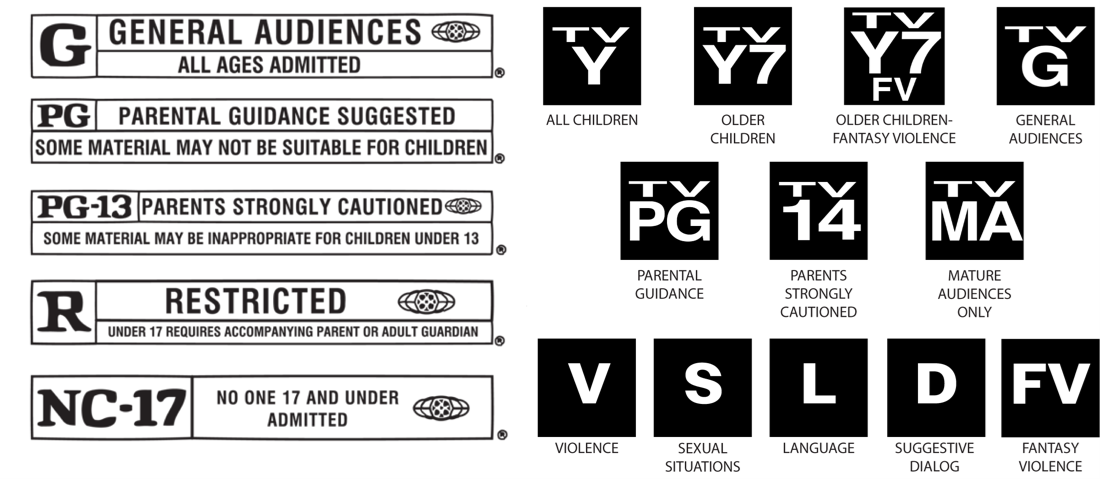Content Analysis from an Age Rating Perspective
Pressure on content creators to ensure their productions are suitable for international markets is exponentially increasing. It began in earnest with the release of blockbuster films in the late 70s and 80s, where meeting global demand meant little more than subtitling or language dubs for three or four languages. Very few major films received the complete treatment of multiple language translations that movies and TV shows currently receive because the distribution chain wasn’t what it is today, and costs were prohibitively expensive.
Things changed with the advent of streaming and the creation of hundreds of distribution platforms and thousands of channels that provide access to millions of titles to billions of consumers. There is no limit to where a title gets distributed for the first time in history. Thanks to the internet, there are no actual geographical boundaries.
No Ratings Standards
There are no global industry ratings standards-no continental, regional, religious, cultural, or community standards applicable to all content. Content and age-rating criteria used by the Motion Picture Association (MPA) in the US can vary significantly compared to the British Board of Film Certification (BBFC), the Australian Classification Board (ACB), New Zealand’s Te Mana Whakaatu Classification Office, or Canada’s National Film Board (NFB). There may be similarities, but US-released titles are not necessarily assigned the same age rating within other English-speaking countries unedited.
It is common for films produced in one country to be banned there, even if those stories include well-known actors, a famous director, and a large production budget. Add to the equation a language, religion, culture, and political or social mores across borders, and the criteria for releasing a title in other markets gets complicated very quickly. If the content does not meet appropriate standards, it’s either edited, assigned an unfavorable rating, or banned. One size does not fit all.
Content Analysis
It is easy for those responsible for releasing titles internationally to get confused about what is or is not acceptable content in targeted markets. There is no simple answer to “what are regulators looking for?” For example, a character in an animated film intended for family viewing mentioning they are in a gay relationship may not register in the US or France. Still, it’s enough to get it banned in Muslim, Hindu, and countries with anti-LGBTQ+ laws. Likewise, a scene depicting intentional violence against police or government officers is enough to increase the rating to an adults-only level or even get it banned in dozens of countries.
The best way to avoid problems is to understand each country’s criteria.
Simple Workflow Changes Eliminate Risk
Content owners and distributors have three opportunities to make culture and regulatory edits to a title: pre-production, post-production, and before distribution. The benefits of performing a content analysis at each stage vary, as does the cost.
- Pre-production is the best time to review a title for cultural compliance. Dissecting the story, analyzing the script, and reviewing shots to identify culturally sensitive events that may impact age ratings in targeted markets can optimize the production process because content risks are identified and managed. Incorporating Spherexratings™ and Spherexgreenlight™ into the pre-production workflow will identify specific scenes and dialogue within the script so the director and writer(s) can address them appropriately and maintain story integrity.
- Analysis of titles post-production using Spherexratings™ and Spherexgreenlight™ provides many of the same benefits as if done during pre-production. By providing specific event timestamps and explanations of the issue, localization teams can bleep, blur, or edit scenes to conform to local standards and guidelines. It adds the benefit of identifying specific non-compliant scenes within the completed title across 200+ countries and territories that warrant review.
- Catalogs being prepared for broad distribution also benefit from using Spherexratings™ and Spherexgreenlight™. Prior understanding of edits needed for which country and platform reduces the number of prepared versions, the cost of preparing them, and the effort necessary to monitor them, making licensing distributable titles across markets worldwide a more manageable process.
While global content release may now be limited to only the most popular or well-funded titles, or those explicitly produced for international distribution, that is changing. The demand from consumers, governments, and platforms for more localized content will force content creators and distributors to deliver localized content soon. With the right tools and knowledge, getting ready is easy.
Related Posts


SILICON VALLEY
2336-H Walsh Ave.
Santa Clara, CA 95051
+1(408) 550-2344
LOS ANGELES
3900 W Alameda Ave.
Burbank, CA 91505
+1(310) 496-7307








